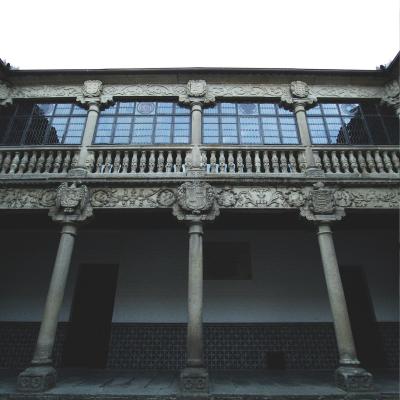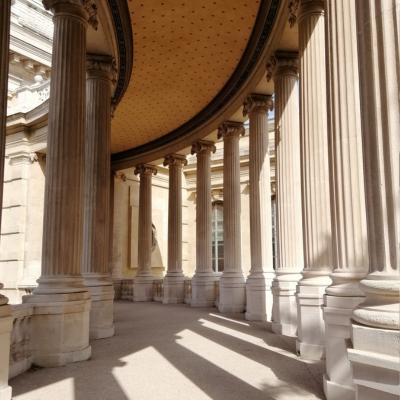Greek mythology significantly shaped Western civilization, influencing literature, philosophy, and especially contemporary architecture. Ancient myths of gods and heroes continue to inspire modern buildings, connecting today’s design with powerful stories from the past that still resonate in cultural and artistic expressions.
Modern architecture, while often minimalist and functional, still draws on classical elements rooted in Greek mythology. Columns, symmetry, and symbolic sculptures bridge eras, reflecting how timeless values and aesthetics from ancient Greece influence contemporary structures in cities worldwide, enriching their identity.

The Influence of Greek Mythology on Modern Architecture
Greek mythology stands as one of the foundational pillars of Western culture, influencing various fields of knowledge, including architecture. Since ancient times, the tales of gods, heroes, and mythical creatures have shaped not only literature and art but also the way buildings are designed and constructed.
The classical aesthetic, dating back to ancient Greece, continues to inspire contemporary architects who seek to evoke the grandeur and beauty of bygone eras in their creations.
Modern architecture, often associated with clean lines and minimalism, is not immune to the influence of Greek mythology. Elements such as columns, pediments, and sculptures of mythological figures are frequently incorporated into contemporary designs, creating a dialogue between the past and the present.
This fusion of styles enriches the aesthetics of buildings and provides a cultural context that resonates with the narratives and values of Western civilization.
How Architectural Elements Inspired by Greek Mythology Function

Architectural elements inspired by Greek mythology serve as a visual language that communicates profound meanings and complex stories. Columns, for instance, are among the most recognizable features of Greek architecture. They not only support structures but also symbolize strength and stability.
The different styles of columns—Doric, Ionic, and Corinthian—carry a set of associations related to Greek mythology and history. Each style evokes a distinct sensation, contributing to the overall narrative of the architectural space.
Beyond columns, the use of sculptures and reliefs depicting mythological figures plays a fundamental role. These representations are not merely decorative; they tell stories and convey cultural values. For example, the image of Athena, the goddess of wisdom, can symbolize knowledge and education in an educational building. Thus, the choice of mythological figures in architectural projects imbues the space with meaning and purpose, connecting it to traditions that date back millennia.
Symmetry is another element that frequently appears in projects inspired by Greek architecture. Proportion and harmony are fundamental principles that Greek architects used to create aesthetically pleasing and balanced buildings. These principles continue to be applied in modern architecture, where symmetry and proportion are utilized to create visually appealing spaces that promote a sense of order and tranquility.
Finally, the integration of natural elements, such as gardens and fountains, is an important characteristic of architecture inspired by Greek mythology. The Greeks valued the connection between nature and construction, creating spaces that were not only functional but also beautiful. This approach remains relevant today, with many contemporary architects seeking to integrate nature into their projects, creating sustainable environments that promote well-being.
Advantages of Integrating Mythological Influences in Contemporary Architecture
Integrating mythological influences into contemporary architecture brings a series of advantages that go beyond aesthetics. Firstly, this integration allows architects to connect with a rich cultural tradition that spans thousands of years. By incorporating elements of Greek mythology, architects create a dialogue between the past and the present, providing users with an experience that is both timeless and contemporary.
Another advantage is the ability to tell stories through architecture. Buildings that incorporate mythological elements are not just structures; they are visual narratives that communicate values and meanings. This can enrich the user experience, making architecture more engaging and significant. For example, a public building featuring sculptures of gods and heroes can inspire a sense of community and belonging, linking citizens to a shared cultural heritage.
Additionally, the use of mythological elements can stimulate creativity and innovation in architectural design. Looking to the past for inspiration, architects may find new ways to solve contemporary challenges. This approach can lead to unique design solutions that meet functional needs while creating visually impressive and culturally relevant spaces.
Lastly, integrating mythological influences can strengthen a community’s cultural identity. Designing buildings that reflect local history and values helps create a sense of place and identity that resonates with inhabitants. This enriches user experiences and contributes to the preservation of cultural heritage, ensuring that stories and traditions are passed on to future generations.
How Greek Mythology Shapes Neoclassical Design and Architectural Aesthetics

Incorporating Greek symbolism into architectural projects: Greek mythology offers a rich source of symbolism that can be integrated into architectural designs. Elements such as gods, heroes, and mythical creatures convey messages and values, enriching the narrative of the space.
Utilizing columns and structures inspired by classical culture: Columns are a distinctive feature of Greek architecture and remain a popular choice in contemporary design. The use of Doric, Ionic, or Corinthian columns evokes a sense of grandeur and tradition, connecting the building to the past.
Creating spaces that evoke architectural history: Architecture inspired by Greek mythology is not limited to replicas of ancient buildings. Instead, the goal is to create spaces that capture the essence of architectural history, using forms, proportions, and materials that resonate with classical aesthetics.
Applying mythological themes in public and private works: Greek mythology can be applied in various contexts, from public buildings like museums and libraries to private residences. This flexibility allows different types of projects to benefit from the cultural richness that mythology offers.
Stimulating creativity through mythological references: Exploring mythological themes can inspire architects to think outside the box and develop innovative solutions to design challenges. The wealth of stories and mythological characters can lead to unique and memorable creations.
Strengthening cultural heritage in new constructions: By integrating elements of Greek mythology into new projects, architects help preserve and promote cultural heritage. This enriches the user experience and ensures that traditions and stories continue to be valued in contemporary constructions.
Greek mythology, therefore, plays a crucial role in shaping neoclassical design and modern architectural aesthetics. By incorporating these elements, architects not only create beautiful and functional spaces but also establish a deep connection with the rich tapestry of human history.
Did You Enjoy Learning About the Influence of Greek Mythology on Contemporary Architecture?
The influence of Greek mythology on modern architecture is a fascinating topic that reveals how the stories and traditions of the past continue to shape our present. Through the integration of mythological elements, architects can create spaces that not only meet functional needs but also tell stories and evoke emotions.
If this topic piqued your interest, there’s much more to explore. The intersection of culture, art, and architecture is a vast and enriching field, offering numerous opportunities to discover how the past and present can intertwine harmoniously.
Frequently Asked Questions
What is the influence of Greek mythology on modern architecture?
The influence of Greek mythology on modern architecture is evident in many buildings. You can see columns, sculptures, and symbols that reference Greek gods and stories.
Which elements of Greek mythology are used in architecture?
Elements such as Doric, Ionic, and Corinthian columns appear in many buildings. Additionally, statues and friezes illustrating legends and myths are also common.
Why is Greek mythology important for architects today?
Architects today use Greek mythology to create meaning and beauty. It connects the past to the present, bringing a sense of timelessness to projects.
Where can we see the influence of Greek mythology in contemporary architecture?
You can see this influence in museums, government buildings, and even homes. Large cities like Athens and Rome are great examples of this.
Is the influence of Greek mythology on modern architecture purely aesthetic?
No. Beyond aesthetics, this influence brings stories and traditions. It helps tell stories through architecture, adding depth to spaces.
